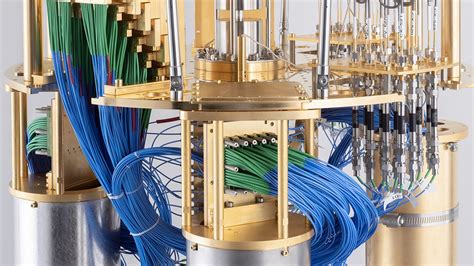The quantum jump in the exploitation of cryptocurrencies: can Ethereum revolutionize Bitcoin?
The world of cryptocurrency is evolving rapidly, and one of the most important progress in recent times has been the emergence of quantum computer science. This powerful technology is a huge promise to revolutionize various fields, including cryptography, which underlies many cryptocurrencies, including Bitcoin.
Bitcoin exploitation is the process of solving complex mathematical problems to validate transactions and create new cryptocurrency units. Currently, most minors use integrated circuits specific to the application (ASIC), which are specialized equipment designed specifically for this task. However, recent advances in quantum computer science has aroused concerns about the potential impact on current extraction methods.
The challenge: Quantum IT vs asics
To better understand the implications of quantum IT on Bitcoin exploitation, we must plunge into the fundamental principles of the two technologies. Quantum computers can solve complex exponentially faster problems than conventional computers, including those used for Bitcoin exploitation. However, the creation of a quantum computer capable of performing these tasks is always an open challenge.
ASICs are designed to be effective and scalable, with billions of transistors on their silicon chips. They use algorithms and specialized equipment to carry out the necessary calculations in parallel, which makes them ideal for solving complex mathematical problems. On the other hand, quantum computers require specific conditions to operate, including precise control over temperature, magnetic fields and other environmental factors.
D-Wave 2: a quantum processor with a twist
One of the most important progress in quantum IT is the development of D-Wave 2, a quantum processor which has been presented as capable of solving complex optimization problems. This device has an impressive 512 qubits (quantum bits), which allows it to simultaneously process large amounts of data.
Although D-Wave 2 is not specifically designed for the exploitation of cryptocurrencies, its capacities provide interesting information on what could be possible with a quantum computer on the market. Imagine a scenario where a large-scale quantum processor and high performance like D-Wave 2 is capable of solving complex mathematical problems which are currently discussed by traditional ASIC.
Can D-Wave 2 replace or even surpass current ASICs?
The question remains whether a wave D 2 with 512 QBits can surpass current ASIC in Bitcoin exploitation. To answer this, we must consider the following factors:
- Complexity: Bitcoin exploitation requires solving complex mathematical problems, such as SHA-256 or Keccak-256 hash functions used in most cryptocurrency networks.
- Evolution:

Quantum computers can simultaneously process large amounts of data, which could potentially solve more complex problems than one ASIC.
- Energy consumption: Quantum IT is a process with high energy intensity, and it is not clear if D-Wave 2 would be able to consume less energy than ASICS traditional.
A hypothetical scenario: theoretical comparison
Let’s see a hypothetical scenario where we compare the performance of a wave D 2 with 512 Qbits against the fastest ASIC. In this scenario, suppose that D-Wave 2 is capable of solving a massive number of complex mathematical problems in parallel, while current ASICs are limited to the treatment of individual problems sequentially.
Assuming an average chopping rate of 1 TBPS (Teraflops) for the two scenarios, we could calculate the expected time that would be necessary to solve the same mathematical problem.
Để lại một bình luận